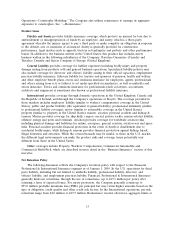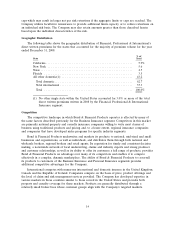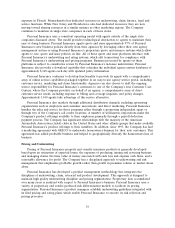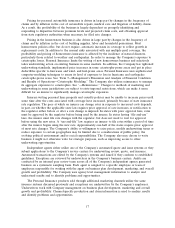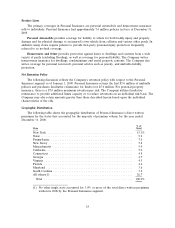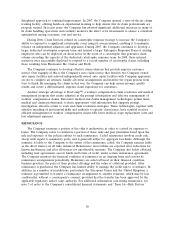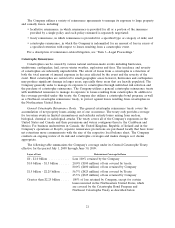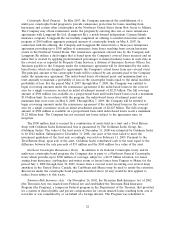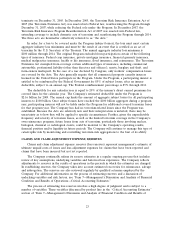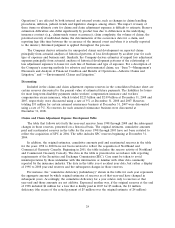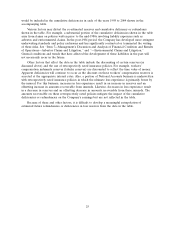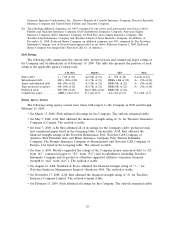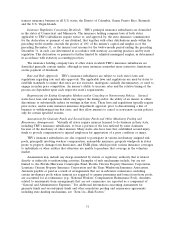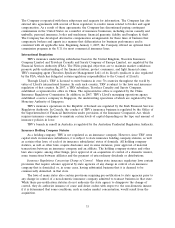Travelers 2008 Annual Report Download - page 35
Download and view the complete annual report
Please find page 35 of the 2008 Travelers annual report below. You can navigate through the pages in the report by either clicking on the pages listed below, or by using the keyword search tool below to find specific information within the annual report.terminate on December 31, 2005. In December 2005, the Terrorism Risk Insurance Extension Act of
2005 (the Terrorism Extension Act) was enacted into Federal law, reauthorizing the Program through
December 31, 2007, while reducing the Federal role under the Program. In December 2007, the
Terrorism Risk Insurance Program Reauthorization Act of 2007 was enacted into Federal law,
extending coverage to include domestic acts of terrorism and reauthorizing the Program through 2014.
The three acts are hereinafter collectively referred to as ‘‘the Acts.’’
In order for a loss to be covered under the Program (subject losses), the loss must meet certain
aggregate industry loss minimums and must be the result of an event that is certified as an act of
terrorism by the U.S. Secretary of the Treasury. The annual aggregate industry loss minimum is
$100 million through 2014. The original Program excluded from participation certain of the following
types of insurance: Federal crop insurance, private mortgage insurance, financial guaranty insurance,
medical malpractice insurance, health or life insurance, flood insurance, and reinsurance. The Terrorism
Extension Act exempted from coverage certain additional types of insurance, including commercial
automobile, professional liability (other than directors and officers’), surety, burglary and theft, and
farm-owners multi-peril. In the case of a war declared by Congress, only workers’ compensation losses
are covered by the Acts. The Acts generally require that all commercial property casualty insurers
licensed in the United States participate in the Program. Under the Program, a participating insurer is
entitled to be reimbursed by the Federal Government for 85% of subject losses, after an insurer
deductible, subject to an annual cap. The Federal reimbursement percentage is 85% through 2014.
The deductible for any calendar year is equal to 20% of the insurer’s direct earned premiums for
covered lines for the calendar year. The Company’s estimated deductible under the Program is
$2.16 billion for 2009. The annual cap limits the amount of aggregate subject losses for all participating
insurers to $100 billion. Once subject losses have reached the $100 billion aggregate during a program
year, participating insurers will not be liable under the Program for additional covered terrorism losses
for that program year. The Company has had no terrorism-related losses since the Program was
established. Because the Acts are relatively new and their interpretation is untested, there may be
uncertainty as to how they will be applied to specific circumstances. Further, given the unpredictable
frequency and severity of terrorism losses, as well as the limited terrorism coverage in the Company’s
own reinsurance program, future losses from acts of terrorism, particularly those involving nuclear,
biological, chemical or radiological events, could be material to the Company’s operating results,
financial position and/or liquidity in future periods. The Company will continue to manage this type of
catastrophic risk by monitoring and controlling terrorism risk aggregations to the best of its ability.
CLAIMS AND CLAIM ADJUSTMENT EXPENSE RESERVES
Claims and claim adjustment expense reserves (loss reserves) represent management’s estimate of
ultimate unpaid costs of losses and loss adjustment expenses for claims that have been reported and
claims that have been incurred but not yet reported.
The Company continually refines its reserve estimates in a regular ongoing process that includes
review of key assumptions, underlying variables and historical loss experience. The Company reflects
adjustments to reserves in the results of operations in the periods in which the estimates are changed.
In establishing reserves, the Company takes into account estimated recoveries for reinsurance, salvage
and subrogation. The reserves are also reviewed regularly by qualified actuaries employed by the
Company. For additional information on the process of estimating reserves and a discussion of
underlying variables and risk factors, see ‘‘Item 7—Management’s Discussion and Analysis of Financial
Condition and Results of Operations—Critical Accounting Estimates.’’
The process of estimating loss reserves involves a high degree of judgment and is subject to a
number of variables. These variables (discussed by product line in the ‘‘Critical Accounting Estimates’’
section of ‘‘Item 7—Management’s Discussion and Analysis of Financial Condition and Results of
23


